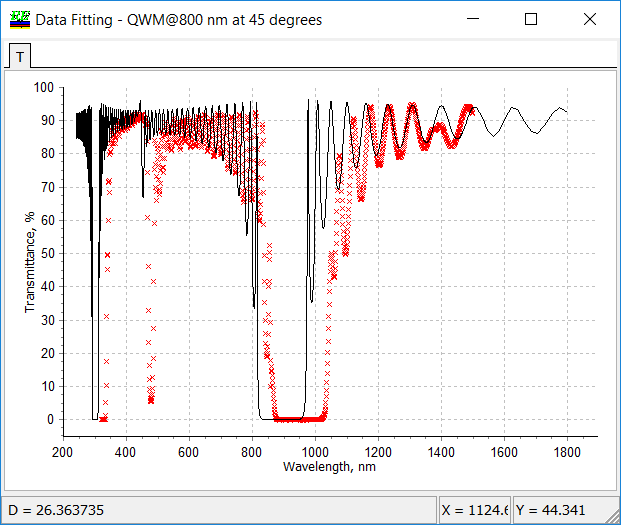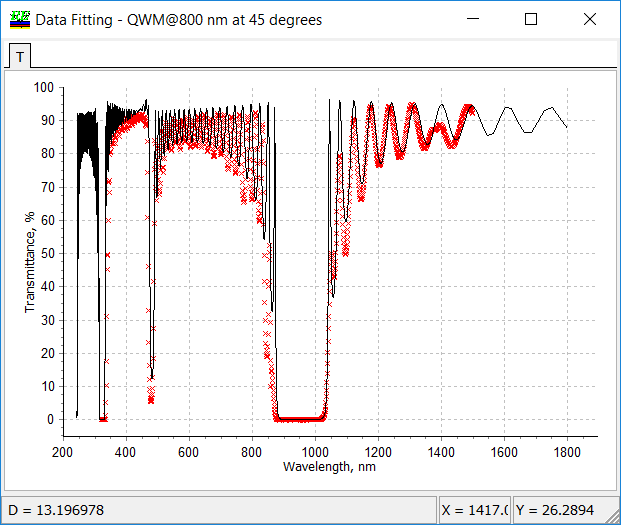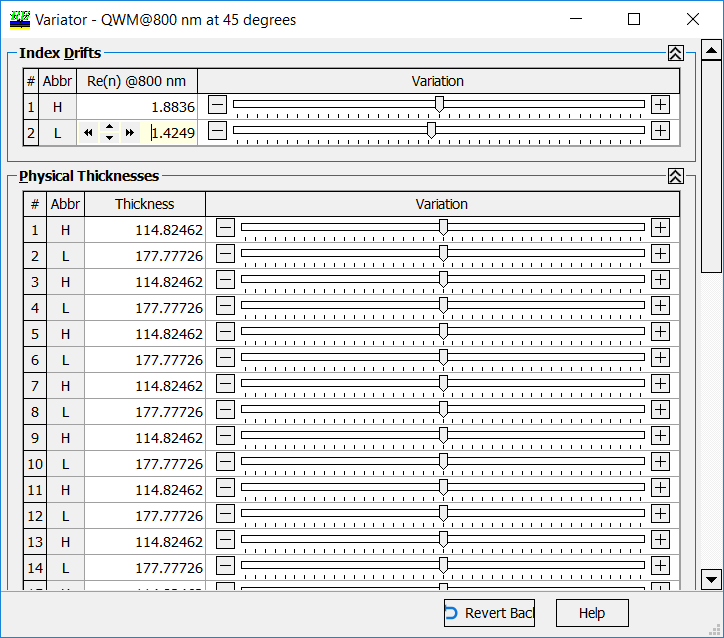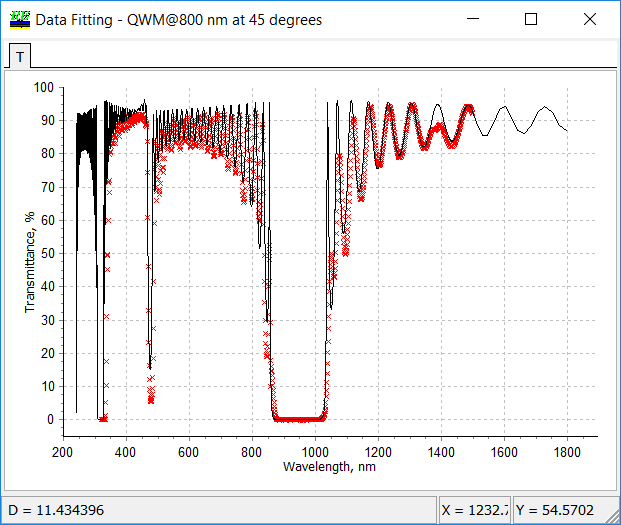| Variator allows you to study how the design spectral characteristics change with variations of layer thicknesses and layer refractive indices. Variator adjusts the parameters of the reverse-engineering model, and modified parameters are immediately shown in all other OptiRE windows.
Using sliders, [-] and [+] buttons, or numerical controls you can adjust the parameters of the design, substrate and incident medium and almost instantly see the effect of such a change. The changes are applied to all other OptiRE windows, therefore you can study multiple effects at once. In the case of dispersive materials the variations are considered as offsets of the refractive index or extinction coefficient. In other words, a constant value controlled by the Variator is added to the refractive index spectral dependence. Revert Back button allows you to restore the initial parameters. |
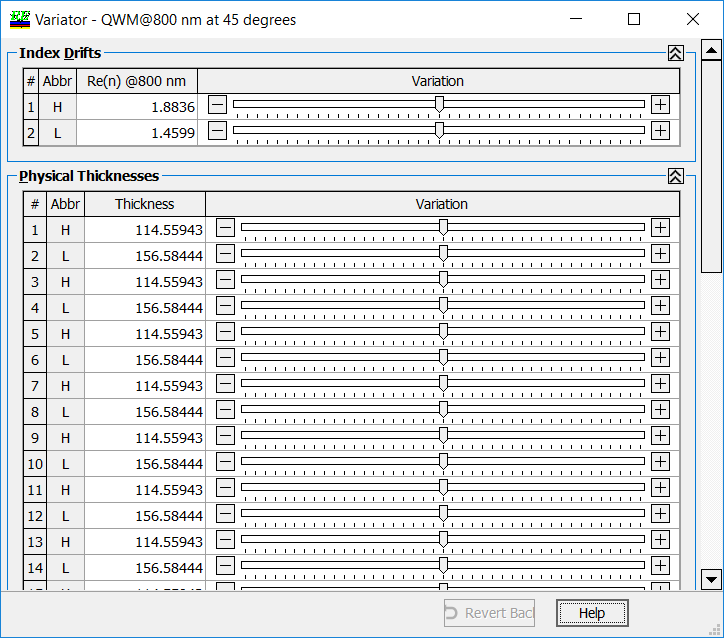 |
| Example. Comparison of the experimental and nominal transmittance data related to a 43-layer quarter-wave mirror reveal errors in layer thicknesses and/or inaccuracies in refractive indices:
Discrepancy function value (bottom left) \(DF=26.36\). |
After application of the “Systematic errors” model, fitting of experimental data by model data is improved:
Discrepancy function value is significantly reduced \(DF=13.20\). There are still deviations |
| Varying refractive indices it is possible to find that the discrepancy function can be reduced by decreasing low refractive index:
|
Decreasing low refractive index leads to better fitting between experimental and model data:
Discrepancy function value is now 11.43. |
OptiLayer provides user-friendly interface and a variety of examples allowing even a beginner to effectively start to design and characterize optical coatings. Read more…
Comprehensive manual in PDF format and e-mail support help you at each step of your work with OptiLayer.
If you are already an experienced user, OptiLayer gives your almost unlimited opportunities in solving all problems arising in design-production chain. Visit our publications page.
Look our video examples at YouTube
OptiLayer videos are available here:
Overview of Design/Analysis options of OptiLayer and overview of Characterization/Reverse Engineering options.
The videos were presented at the joint Agilent/OptiLayer webinar.

